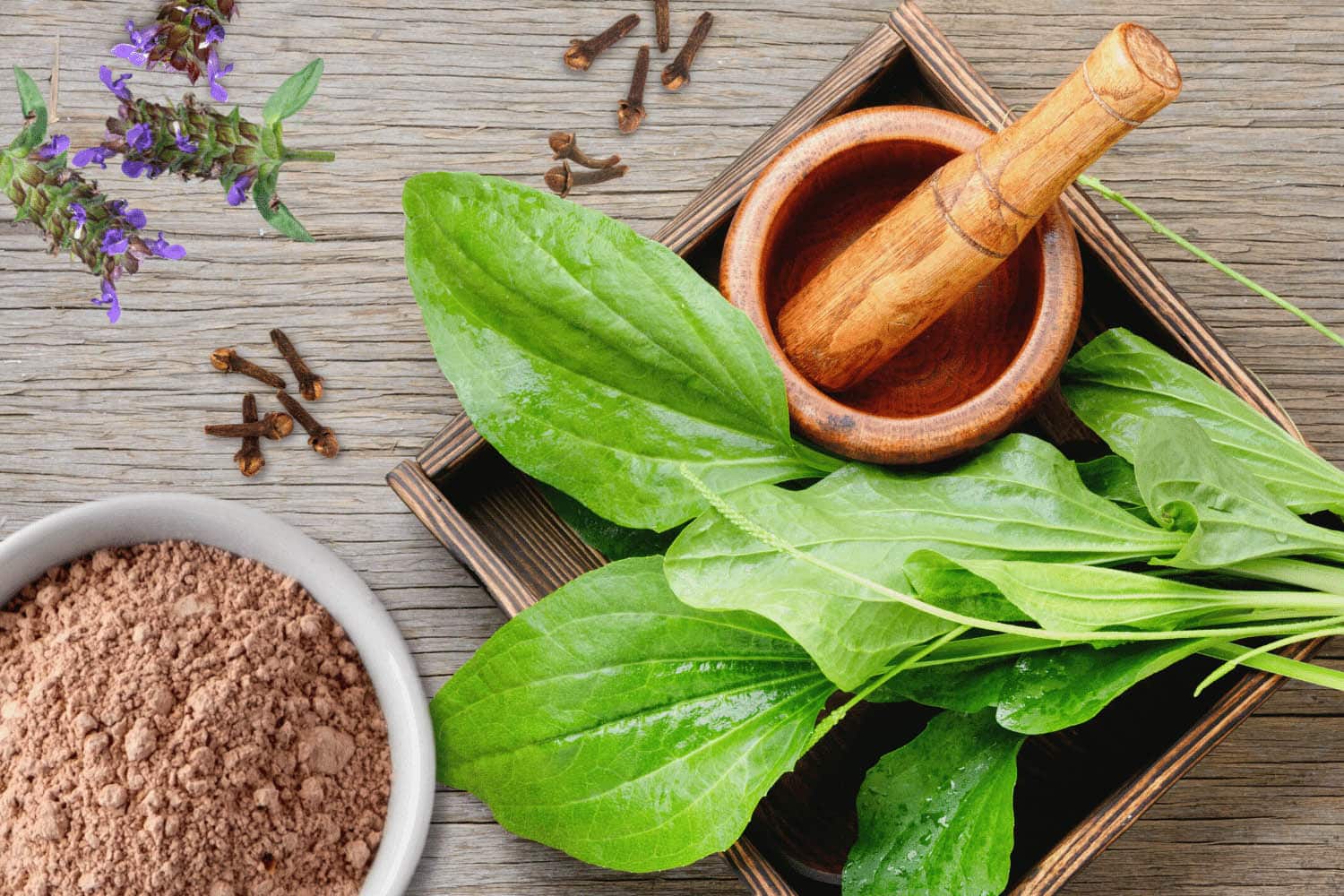It’s not quite summer yet in North Idaho, but the mosquitoes haven’t gotten the memo.
Thanks to a very rainy spring, they are out in force right now and are HUGE! We have positively prehistoric-sized mosquitoes this year and they all seem to have babies to feed.
My herbal apprenticeship spent this week out in the woods, learning about identifying conifers, digging up and processing arrowleaf balsamroot… and feeding the mosquitos.
I’m amazed at how the little buggers got through thick denim jeans and multiple layers of fabric. No joke — if I have 1 mosquito bite, I have 100 of them… And I’m not one of those people who gets a little spot that goes away in a day or two, all my bites turned into huge, angry red welts and they’ll likely stick around all week. Es no bueno.
Fortunately for my itchy self, I developed a recipe for an effective bug bite remedy a couple summers ago. This Sting Stick has been a life saver. Make it before you need it — it’s an excellent helper to keep handy in your herbal first aid kit to deal with all kinds of stinging insect bites, including mosquito and fly bites, bee/wasp stings and even splinters. In a pinch, I’ve even used it to help dry up a blister and bring a pimple to a head. (Not that I EVER get pimples mind you 🤣😂 )
Plantain
Like many new herbalists, plantain was one of the very first herbs I learned to identify and use. I learned early on that a spit poultice made from the fresh leaves is a miracle worker on a wasp sting sustained on a hike. Plantain is an excellent all-purpose drawing herb, meaning it will work to draw out the venom or stinger from an insect bite/sting or foreign objects such as splinters in short order. And since plantain is energetically cooling, it also works to relieve “hot” conditions such as itchy bites, stings or rashes. It also has antihistamine properties that will help take down the itchy swelling.
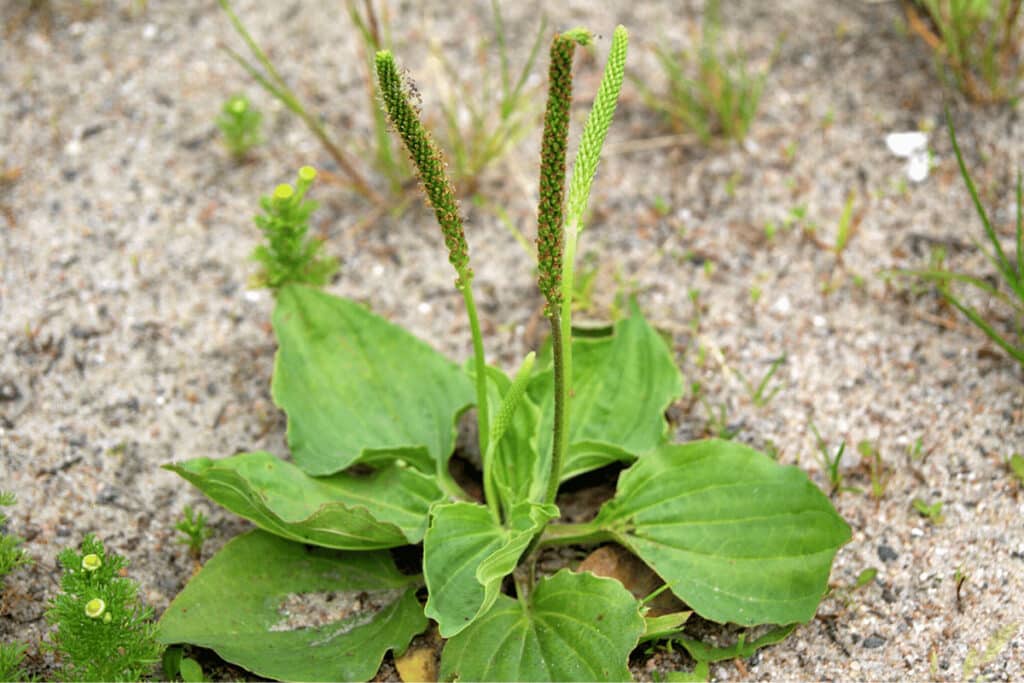
Plantain likes to grow in disturbed soil such as roadsides and places that have seen foot traffic such as dirt roads and my garden walkways. The fun part about “weeding” plantain that’s growing in less than ideal places out of my garden is I actually want to keep these weeds. Place the leaves on a screen or baking rack for airflow and let them dry out completely before transferring them to a glass jar for longterm storage. It’s best to keep the leaves intact until you’re ready to use them for the longest shelf life, since smaller pieces means more surface area exposed to oxidation.
Plantain is a veritable Swiss army knife of medicinal herbs. Seriously, just look at this list of actions and their associated uses:
If you have it growing around you, it’s not a bad idea to dry and store plantain for the off season. Better yet, you can juice it and freeze the juice in ice cubes to thaw out as needed for use internally or as a topical compress. Many of plantain’s best healing properties are actually water soluble, so a juiced ice cube is an ideal way to preserve its medicinal value for later.
Self heal
The Sting Stick also harnesses the healing power of another common weed: self-heal (Prunella vulgaris). It’s one of those lesser-known herbs that many people don’t recognize by name, but once they see it, they realize it’s been growing nearby all along!
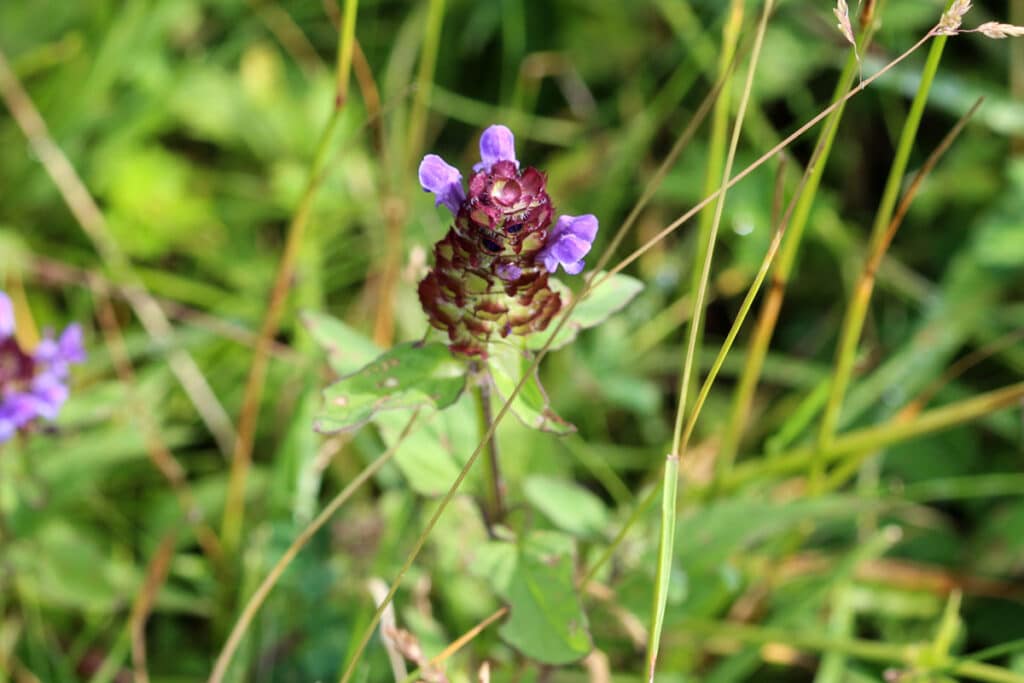
Like plantain, self heal has a long history of traditional use as a drawing herb to pull out foreign objects from the skin and prevent infection. According to Mary Siisip Geniusz’ book Plants Have so Much to Give Us, All We Have to Do is Ask: Anishinaabe Botanical Teachings, the indigenous people of the Great Lakes region of Canada and the US known as Anishinaabe call self heal ingijibinaa, which means “the great drawer-outer.”
And as its common names suggest (woundwort, heal all, all heal), self heal is also a great all-purpose vulnerary for mending minor wounds and reducing swelling. It may be applied as a poultice or a cold compress to help soothe and heal minor cuts, burns and insect bites.
Solubility challenges
Most of plantain and self-heal’s best medicinal constituents are going to be water soluble, which is less than ideal for an oil and wax-based salve.
This is why, for this formula at least, it’s important to do an alcohol intermediary oil infusion for each of your infused oils. This will help you capture some of the water and alcohol soluble constituents that are not extractable by oil alone.
Finishing touches
Bentonite clay is a great addition to any therapeutic preparation designed to draw out and absorb toxins and impurities. Bentonite is actually the commercial name for the mineral montmorillonite, which was discovered near Fort Benton, Montana, hence its common name. Bentonite is composed primarily of silica, sodium, magnesium, calcium and small amounts of aluminum, potassium and other trace elements. Studies suggest it helps to speed up healing following an allergic reaction, such as contact dermatitis or insect bites.
The Sting Stick formula is rounded out by a good dose of clove essential oil. Thanks to high levels of the terpene eugenol, clove is an effective analgesic — meaning it will numb away pain and itching. It also has antihistamine actions, which will help to bring down the allergic swelling of the bite.
Are you ready to make your own herbal Sting Stick? This recipe relies on a couple of herb-infused oils, so hop over to Making Herbal Oil Infusions and Alcohol Intermediary Herb-Infused Oils for a refresher on that if you need one. ♥
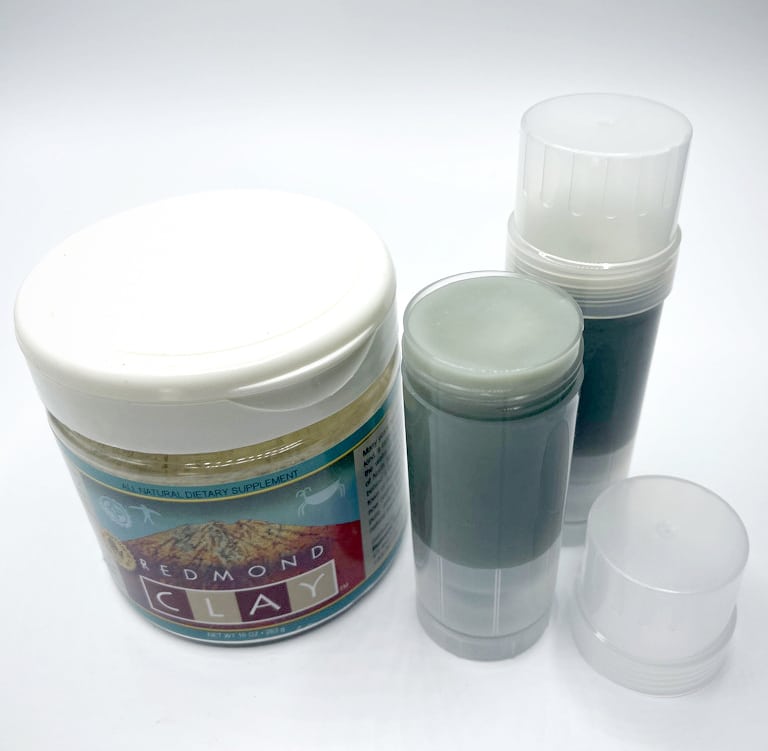
P.S. If you have a particularly bad case of bites, a friend in my apprenticeship class who is learning homeopathy also recommends taking Arsenicum Album 200c for itching and Apis Mellifica 200c for swelling.
P.P.S. You can avoid that annoying “sinkhole” from forming in the middle of the stick by filling the tube *not quite* full, and allowing that to set for 10-15 seconds or so before topping up. Wait a bit longer for larger tubes. You may need to return your mixture to your heat source while you wait, so it doesn’t solidify too much to pour.
The more you know 🌈
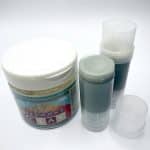
Herbal Sting Stick
5 Stars 4 Stars 3 Stars 2 Stars 1 Star
No reviews
Ingredients
14 g jojoba oil, self-heal infused
10 g cera bellina or beeswax pastilles
12 g bentonite clay
25 drops clove essential oil
Instructions
- Infuse your tallow and jojoba oils following the procedure for an alcohol intermediary oil infusion. Barely moisten the herbs with a shallow layer of 151-proof grain alcohol and allow to sit overnight before proceeding with a normal oil infusion.
- Using a gentle heat source, warm the tallow, jojoba and wax until completely melted and liquid.
- Add clay and essential oil and stir until blended and just beginning to increase in viscosity. You want the mixture to be slightly thickened when you pour it into the tube so the clay will be held in suspension and not sink to the bottom.
- Carefully pour mixture into your storage jar, deodorant tube or chapstick tubes.
- Allow to cool completely before capping. You don’t want condensation introducing water into your formula ♥
Notes
I recommend glass containers for storing homemade lotions and potions. Glass doesn’t leach chemicals and it’s easier to clean/sterilize after the product is used up and you’re ready to refill.
If you do choose to use a plastic container, be aware that essential oils tend to react with plastic, so even if you can get it “clean,” your container will likely not be reusable.
If using a twist tube, you can prevent a “sinkhole” from forming by filling the tube about 4/5s full, and allowing it to set for 10-15 seconds before topping up. Wait a bit longer for larger tubes. You may need to return your mixture to your heat source while you wait, so it doesn’t solidify too much to pour.

